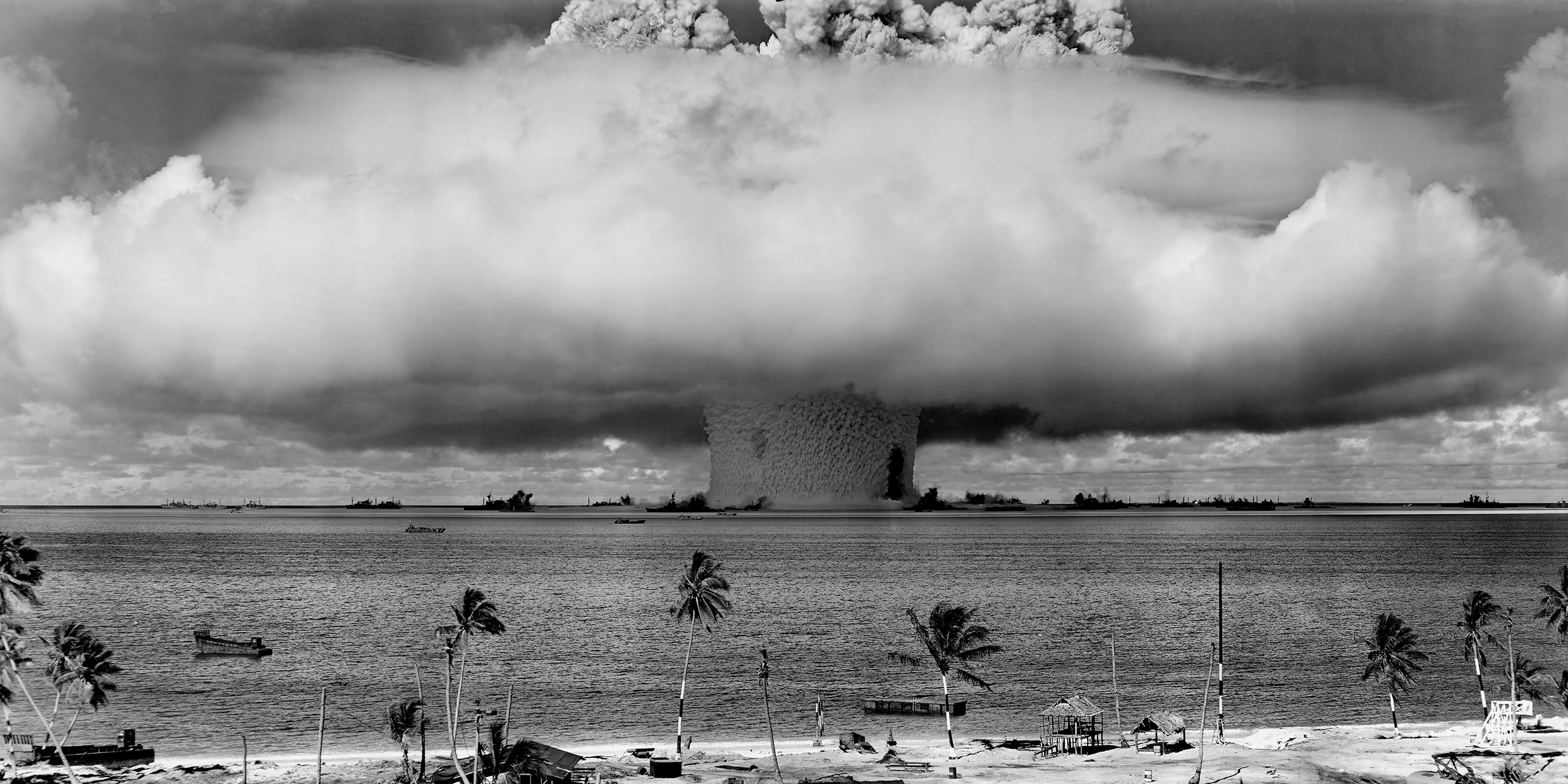Originally published 23 November 1998
A decade ago, landscape photographer Peter Goin was granted access to several of America’s most restricted nuclear weapons facilities. His visits resulted in a haunting book of color photographs called Nuclear Landscapes.
The 570-square-mile Hanford Nuclear Reservation in Washington State is one of the landscapes recorded by Goin. This was a fruitful farming region before the government took it over in 1943, as part of the Manhattan Project, to build the world’s first large-scale nuclear reactor.
Eighteen months after construction began, the Hanford reactor was producing plutonium. Less than a year later, a bomb containing Hanford plutonium was exploded at Alamogordo, New Mexico, ushering in the atomic age.
Eventually, nine plutonium-producing reactors were built at Hanford. Eight were shut down in the 1960s. The reservation is today mostly a vast burial ground for radioactive waste.
The earth at Hanford contains tens of millions of cubic feet of nuclear waste materials, and as much as 100 times that much contaminated soil. Enough liquid wastes were discharged to the environment from the Hanford plants to cover Manhattan to a depth of 40 feet.
More than a half-million curies of radioactive iodine-131 were released into the atmosphere at Hanford between 1944 and 1957. By contrast, the major nuclear accident at Three Mile Island in Pennsylvania in 1979 released about 20 curies of radioactivity.
These dire poisons are invisible in Goin’s photographs, but crumbling concrete bunkers, ghostly decommissioned reactors, scummy standing water of waste disposal ponds, rusty waste retention tanks, and thousands of acres of barren “burial grounds” are testimony to the obscene desecration of nature he chronicled in Nuclear Landscapes (published by Johns Hopkins University Press in 1991).
Goin also visited the weapons test sites in Nevada and on the Bikini and Eniwetok atolls in the Pacific.
The Nevada site covers an area larger than Rhode Island on the boundary between the Mohave and Great Basin deserts. By government definition this was “wasteland,” and therefore appropriate for the testing of nuclear weapons. Ecologists know the desert has its own precious flora and fauna.
Between 1950 and 1992, approximately a thousand weapons were exploded at the Nevada site, above and below ground. In one particularly bizarre test, 111 pigs were lined up in zippered garments at various distances from ground zero and exposed to an above-ground detonation. Seventy-two pigs died immediately, but the government garnered what it deemed to be important data on the thermal properties of military uniforms.
Of course, we should remember that humans were also exposed to the tests.
Goin’s photographs of the Nevada test site show a landscape of rust and desolation, ground pocked with craters, concrete roads to nowhere, and a spooky remnant of a “doom town” built to test the effects of blast on homes, office buildings and fallout shelters.
The Nevada site is too profoundly contaminated for feasible cleanup, and will remain poisoned far into the future.
In some ways, the most affecting of Goin’s photographs are those of the Bikini and Eniwetok Atolls, formerly paradisal in their tropical beauty. In the photographs, crumbling concrete bunkers and rusting tanks are mute monuments to poisoned earth and water.
Although no tests have been held in the islands since 1958, the landscape and its native people remain scarred by nuclear trauma.
Can humankind ever make amends?
Many of America’s nuclear facilities are surrounded by government-owned security buffer zones of mostly untouched natural habitats. Beginning in 1972, the Atomic Energy Commission set aside some of these unused acres as wildlife and ecology research refuges, called National Environmental Research Parks. Seven such parks were established to promote “research and education in the environmental sciences.”
These parks have become invaluable outdoor laboratories for scientific field work on everything from climate change to nutrient cycling in soils.
Today, the US Department of Energy has responsibility for nuclear facilities, including the buffer-zone refuges. According to a recent report in the journal Science, the department has been quietly divesting itself of research parks land around facilities at Oak Ridge, Tennessee, Idaho Falls, Idaho, and Richmond, Washington, wilderness tracts no longer deemed essential to safeguarding the security of the labs.
The land has been transferred to local governments and the US Bureau of Land Management, which in turn have sold much of it to developers for house lots, landfills, and commercial construction.
Another 500 square miles of land may soon go on the auction block, according to Science. Research parks land at other facilities, such as Fermilab in Illinois and the Savannah River Site in South Carolina, may also be at risk.
So far, the number of acres involved in these transfers is not great compared to the huge tracts of earth poisoned by weapons production and testing over the past half-century. But their symbolic significance as reparation for decades of landscape abuse cannot be overstated.
The National Environmental Research Parks should be meticulously preserved for the nation as places were ecologists and wildlife managers can learn and practice their trades, and where people of future generations can experience wildness — a small gesture of apology to the wounded gods of earth, life, water, air.



